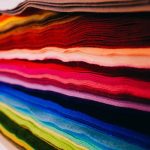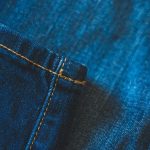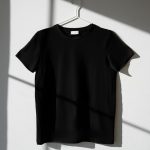When it comes to choosing between broadcloth and cotton for your wardrobe, you're faced with a decision as intricate as the patterns they hold. Both fabrics have their own unique characteristics, and understanding their differences will help you make an informed choice.
From the smooth and tightly woven broadcloth to the versatile and breathable cotton, each fabric brings its own set of advantages. In this comparison, you'll delve into the details of broadcloth versus cotton, weighing factors like durability, comfort, and maintenance to determine which fabric better suits your needs.
So, let's unravel the intricacies of these fabrics and uncover which one emerges as the superior choice for your clothing preferences.
Key Takeaways
- Broadcloth is known for its tight weave, durability, and resistance to tearing and fraying.
- Cotton is breathable, comfortable, and suitable for sensitive skin, making it ideal for warmer weather.
- Broadcloth offers exceptional strength and longevity, while cotton may wrinkle and wear out more quickly.
- Both fabrics are versatile and can be used in various garments, making them preferred choices for everyday clothing items.
Characteristics of Broadcloth
When considering broadcloth, focus on its durability, smooth texture, and versatility for various garment types.
Broadcloth is known for its tight weave, which contributes to its durability and smooth, lustrous finish. The weave types commonly used in broadcloth include poplin and twill weaves. Poplin weave creates a fabric with a fine rib effect, while twill weave produces a diagonal rib pattern. These weave types enhance the fabric's strength, making it resistant to tearing and fraying.
Additionally, broadcloth comes in a wide range of color options, allowing for endless possibilities in garment design. Whether you prefer classic white or a bold, vibrant hue, broadcloth can accommodate diverse color preferences. Its ability to hold dyes well ensures that the chosen color remains vivid and true after numerous washes.
The smooth texture of broadcloth also makes it suitable for various garment types, from dress shirts to blouses and even lightweight suits. Its versatility in both color and garment options makes broadcloth a popular choice for those seeking high-quality, enduring fabrics for their wardrobe.
Advantages of Cotton
You'll find that cotton stands out for its breathability and comfort, making it a top choice for everyday wear.
Cotton is celebrated for its breathability, allowing air to circulate through the fabric, making it ideal for warmer weather or for anyone who tends to perspire. This natural ability to allow air to flow through the fabric helps to keep you cool and dry, making cotton garments incredibly comfortable to wear, especially during long hours.
Additionally, cotton is highly absorbent, capable of holding up to 27 times its weight in water. This means that it can wick moisture away from the body, further enhancing its comfort and breathability.
Furthermore, cotton is hypoallergenic and doesn't irritate the skin, making it an excellent choice for those with sensitive skin or allergies. The fabric's soft and gentle touch adds to its comfort, making it a go-to option for various clothing items, from t-shirts to undergarments.
Uses in Clothing
For clothing, cotton is widely used in a variety of garments due to its breathability and comfort. Cotton's ability to allow air to circulate around the body makes it an ideal choice for clothing in warm climates or for physical activities. Additionally, its natural moisture-wicking properties help to keep the body cool and dry, making it a popular choice for activewear and undergarments. The softness and comfort of cotton also make it a preferred fabric for everyday clothing items such as t-shirts, dresses, and casual shirts.
- Breathability: Cotton's breathability makes it suitable for warm weather clothing, allowing air to flow through the fabric and around the body, keeping the wearer cool and comfortable.
- Moisture-Wicking: The natural moisture-wicking properties of cotton make it an excellent choice for activewear, as it helps to draw sweat away from the body, keeping the skin dry and comfortable during physical activities.
- Comfort: The soft and comfortable feel of cotton makes it a popular choice for everyday clothing items, providing a pleasant wearing experience throughout the day.
Durability Comparison
In assessing the durability comparison between broadcloth and cotton, consider the fabric's ability to withstand regular wear and tear. Fabric strength and longevity are crucial factors to evaluate when determining the durability of a fabric.
Broadcloth, known for its tightly woven fibers, offers exceptional strength and durability, making it resistant to tearing and abrasion. This robust construction enhances its longevity, allowing it to maintain its quality even with frequent use.
On the other hand, while cotton is a durable fabric, it may not match the longevity of broadcloth due to its tendency to wrinkle and wear out more quickly. Wear and tear resistance is a key aspect to consider, especially for clothing intended for daily wear.
Broadcloth's durability makes it a reliable choice for garments that need to withstand regular use and laundering. When comparing broadcloth vs cotton in terms of durability, the former's ability to maintain its integrity over time positions it as a strong contender for enduring and resilient clothing options.
Care and Maintenance
To maintain the quality of broadcloth and cotton fabrics, regularly follow care instructions provided on the garment labels. Proper care and maintenance are essential for keeping your clothing in top condition.
When it comes to washing techniques, it's crucial to follow the specific guidelines for each fabric. Broadcloth typically requires a gentle cycle with cold water to prevent shrinkage and preserve the fabric's integrity. On the other hand, cotton can withstand slightly warmer water temperatures, but it's still important to avoid hot water to prevent color fading and fabric damage.
Additionally, consider using mild detergents that are suitable for delicate fabrics to ensure the longevity of both broadcloth and cotton garments. While fabric softeners can be beneficial for cotton, they may not be necessary for broadcloth due to its smooth texture. However, if you do choose to use fabric softeners, opt for those designed for delicate fabrics and use them sparingly to avoid buildup that can affect the fabric's breathability.
Frequently Asked Questions
Can Broadcloth Be Used for Making Bedding and Home Decor Items?
Yes, broadcloth can be used for making bedding and home decor items. Its versatility makes it suitable for various applications, and its durability ensures that it can withstand the wear and tear of everyday use in your home.
Is Cotton or Broadcloth More Sustainable and Environmentally Friendly?
When considering sustainability and production methods, cotton and broadcloth differ. Cotton, though natural, often requires more water and pesticides. Broadcloth is usually made from synthetic fibers, potentially using less resources and harmful chemicals, making it more environmentally friendly.
Are There Specific Regions or Cultures Where Broadcloth Is Traditionally Used in Clothing?
In various regions and cultures, broadcloth has deep roots in traditional clothing. Its origins date back centuries, and it holds significant cultural significance. Today, broadcloth continues to be utilized in modern fashion, showcasing its enduring relevance.
Can Broadcloth and Cotton Be Blended Together to Create a Fabric With the Benefits of Both Materials?
You can blend broadcloth and cotton to create a fabric with the benefits of both materials. This blend offers the durability of broadcloth and the softness of cotton, making it a versatile option for various clothing items.
What Are the Historical Origins and Significance of Broadcloth and Cotton in the Textile Industry?
Historical origins and significance of broadcloth and cotton in the textile industry have shaped fabric development and textile innovation. Their cultural significance and historical significance have propelled the evolution of the textile industry.
- Where to Buy Sherpa Suede Fabric - July 12, 2025
- How to Draw or Illustrate the Texture of Suede Fabric - July 12, 2025
- What Is Baseball Suede Leather Fabric? - July 12, 2025







